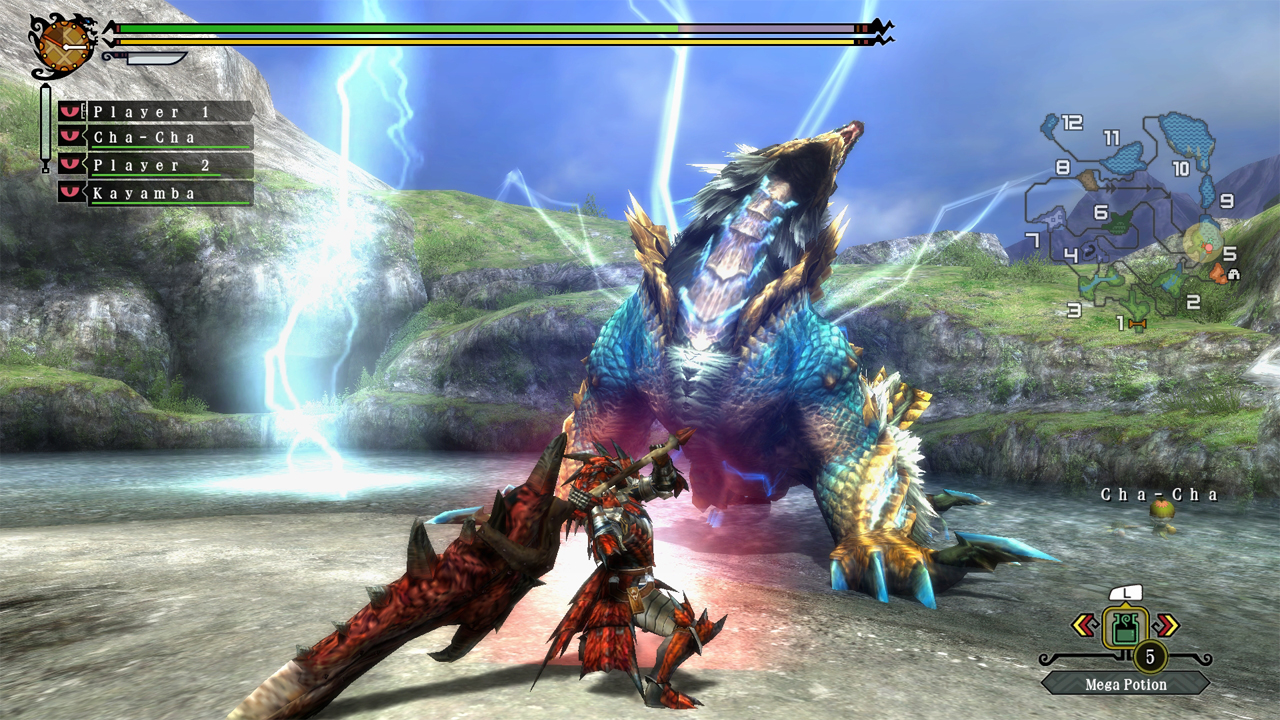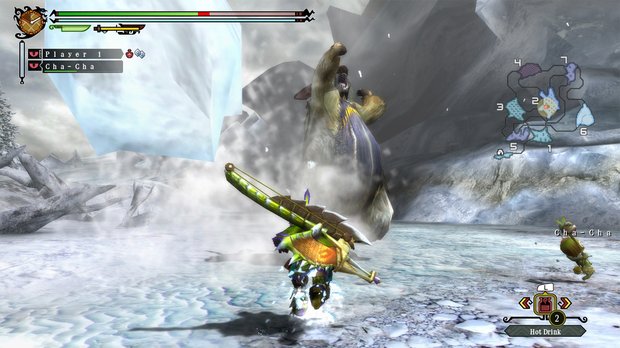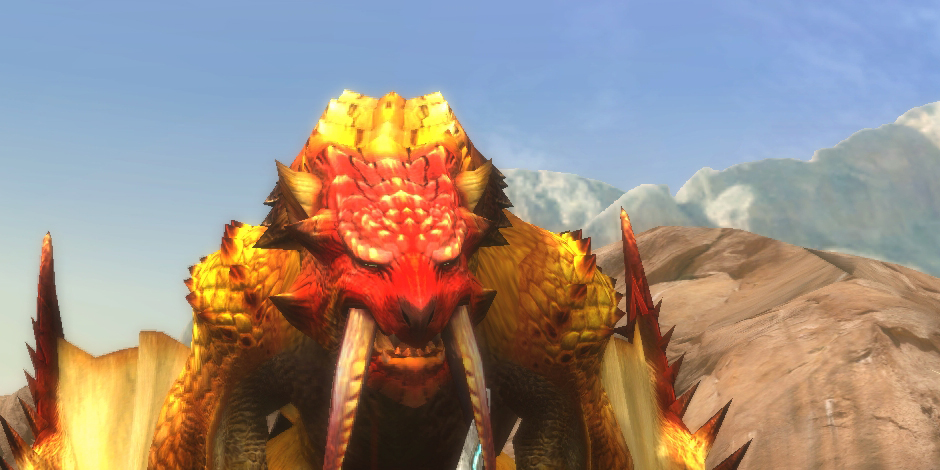GamesRadar+ Verdict
Pros
- +
Getting into fights with giant monsters
- +
Crafting your own weapons and armor
- +
Seamless online experience
Cons
- -
A high learning curve
- -
Lack of detailed explanations
- -
Clunky controls
Why you can trust GamesRadar+
If there was a guide on how to survive in a world filled with monsters, Monster Hunter would be it. True to its name, the action-RPG series is known for taking players on quests to battle giant monsters, and the action is as much about managing your resources as it is stabbing foes with the pointy end of your sword. Mixing hunting and foraging, Monster Hunter 3 Ultimate continues this tradition and brings the hunt to the Wii U, providing an enhanced version of the Wii’s Monster Hunter Tri with a plethora of new quests and creatures to slay. The result requires an acquired taste for Monster Hunter's brand of often repetitive action. But if you’re up for the challenge, Monster Hunter 3 Ultimate will satisfy your appetite.
Monster Hunter 3 Ultimate has received a makeover from 2010's Monster Hunter Tri, and features retouched character models and dynamic lighting effects. Environments retain their original beauty and monsters look even more ferocious than before, but everything looks more vivid in high definition. Despite being an enhanced version of a Wii game, Ultimate still manages to provide Wii U owners with a lush world to explore--even if it doesn’t take advantage of their console’s full potential. Ultimate also builds upon Tri’s bestiary and offers three new areas to explore, so even if you’ve already played the original, you’ll appreciate the challenging new additions that further add to the thrill of battle.
Storytelling takes a backseat to Monster Hunter 3 Ultimate's emphasis on quests, so even if you’ve never played a Monster Hunter game before, you’ll have no trouble following its simple narrative. You begin your adventure as a rookie hunter, who is given the monumental task of defeating a giant sea monster that is victimizing a fishing village. Before you can face it, you’ll need to prove yourself to your guild and increase your hunting rank by taking on increasingly difficult quests. These range from the mundane mushroom-hunts to grueling battles against giant beasts, which upon completion, open up more quests for you to take. The game’s structure is basic, but the nature of the quests, their environments, and the importance of crafting provide enough variety to prevent it from becoming a monotonous experience.

"Ultimate still manages to provide Wii U owners with a lush world to explore--even if it doesn’t take advantage of their console’s full potential."
Monster spoils and resources from your environment play a crucial role in successfully completing a quest. Your character doesn’t level up in the traditional sense, so you’ll need to sell your resources to purchase stat-boosting armor or use them to craft even better equipment. There’s a dynamism here that works quite well, and you’ll often redo quests simply to mine for ore or hunt elusive monsters for their scales. At times it can get exhausting, but it’s really rewarding when your hard work pays off and you end up creating a devastating weapon that makes your job as a hunter a whole lot easier.
Considering the game stops holding your hand after the first few introductory quests, figuring things out on your own feels liberating, but can also be daunting for beginners. You’ll encounter so many items that knowing what to do with them can become overwhelming. The game doesn’t explain the importance of a specific item and only indicates whether it’s rare or not, meaning you won’t know whether to save it for later or sell it for cash. Effectively utilizing your resources takes practice, and some hunts will prove frustrating to complete without the proper equipment. Hunting for materials can also get difficult as you won’t know what spoils a monster drops until you defeat it, nor is there a guarantee that killing said monsters will yield the material you need. As such, advancement can often feel masochistic, as you find yourself caught between an extremely difficult hunt and the repetitive killing of trivial monsters to find materials to make that hunt easier.
What is straightforward, however, is the act of hunting monsters. Once a quest starts, you have a set amount of time to locate the beast and take it down. Despite being fictional monsters, their movements and animations feel natural and augment the feeling of hunting actual beasts in the wild. That said, a good amount of strategy is involved in taking down most beasts. Some call for back-up, others rely on cheap tactics, and nearly every beast tries to escape when it’s about to die. Hunting for monsters quickly becomes a drawn-out encounter that features an impressive amount of diversity, not because your objective differs, but because each monster has its own unique way of surprising you. The open-ended structure of these fights also means you’ll need to know when to retreat and tend to your wounds.
"... figuring things out on your own feels liberating, but can also be daunting for beginners."
The game offers an extensive array of weapons to choose from, but no matter what you choose, you’ll find that the controls feel clunky, and successfully landing a blow takes some getting used to. You can move the camera around at any time, but monsters often get so close that they block your view altogether and make it hard to dodge their attacks. Ultimate does alleviate the need to rotate your camera to find your target and includes an auto-targeting option that centers the camera on the monster you’re hunting. This not only makes it easier to keep track of where a monster is, but it makes battles less frustrating as well.
Additionally, the GamePad can be used to free your television screen from excess clutter and display important commands in handy panels on your screen. You can still use normal button controls for your items, but it’s great to be able to just tap an item instead of spending time scrolling through your inventory, especially in the thick of battle. The GamePad also lets you use its built-in mic for chatting with players during online matches and it offers clear sound that makes it easy to communicate with or without a headset.
You can take up to two computer-controlled companions with you during your travels, but their random actions don’t provide much support when you need it and only serve to distract monsters. The real co-op experience lies in the game’s online mode, which lets up to four players go on quests together to fight monsters and gather resources. Online mode has its own set of quests and rewards that offers plenty of incentives to gather some friends (or strangers) and go hunting together. Playing with a group feels more dynamic than playing alone and it emulates the feeling of going on PvE quests in MMOs.

"Monster Hunter 3 Ultimate is a meaty title worth sinking your teeth into."
Featuring over 300 quests in total and a plethora of things to collect, monsters to defeat, and lands to explore, Monster Hunter 3 Ultimate is a meaty title worth sinking your teeth into. Its high learning curve may dissuade some players inexperienced with the series, but with enough patience and resourcefulness, you’ll be able to get through any problem and feel proud that you accomplished it. If you’re looking for a great reason to bring out your Wii U and play and online RPG with friends, look no further.
More info
| Genre | Role Playing |
| Description | Players take on the role of a hunter and explore a settlements within the Monster Hunter universe, complete quests on their journey to seek and slay monsters to improve their skills and earning equipment upgrades. |
| Platform | "3DS","Wii U" |
| US censor rating | "Teen","Teen" |
| UK censor rating | "","" |
| Release date | 1 January 1970 (US), 1 January 1970 (UK) |



